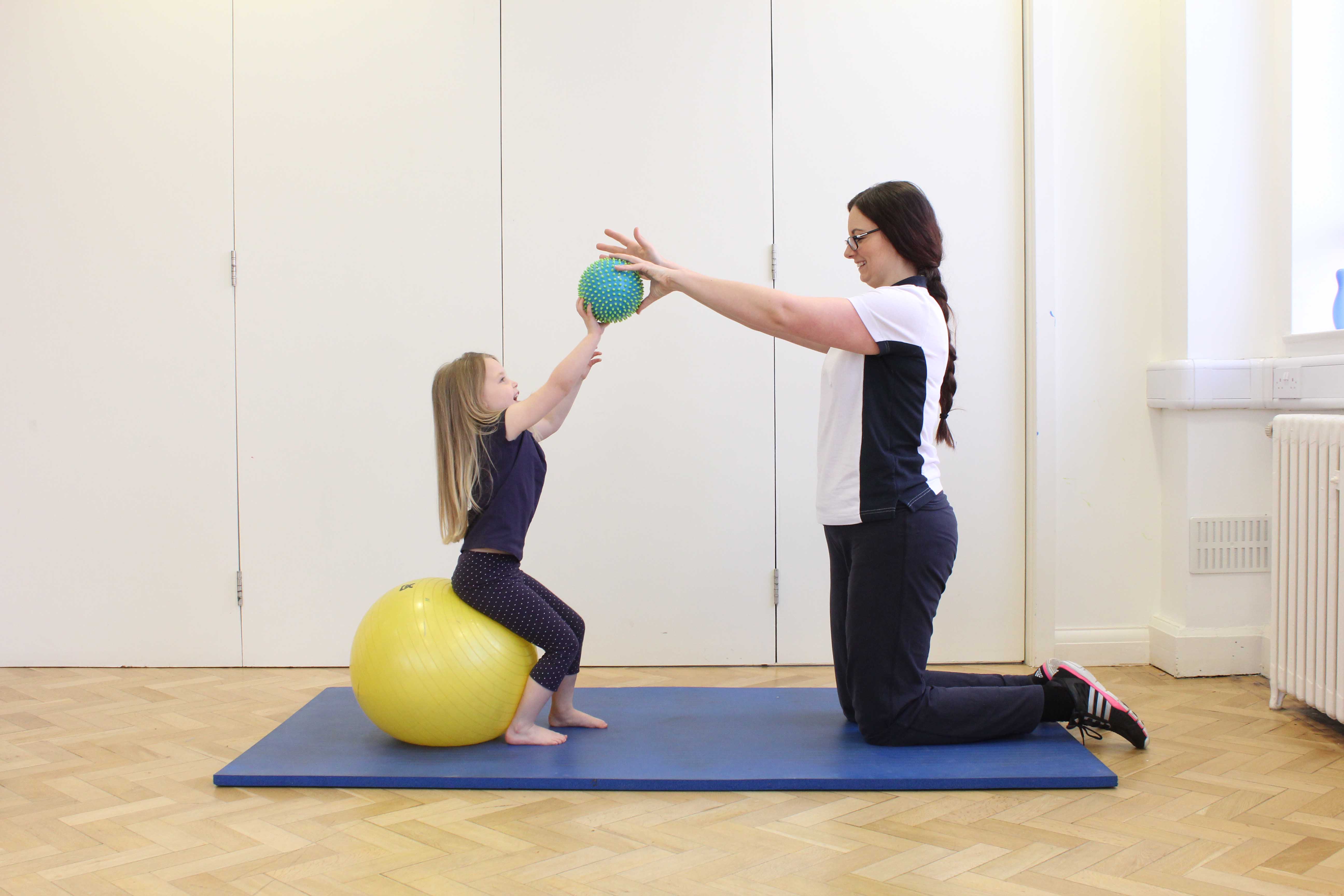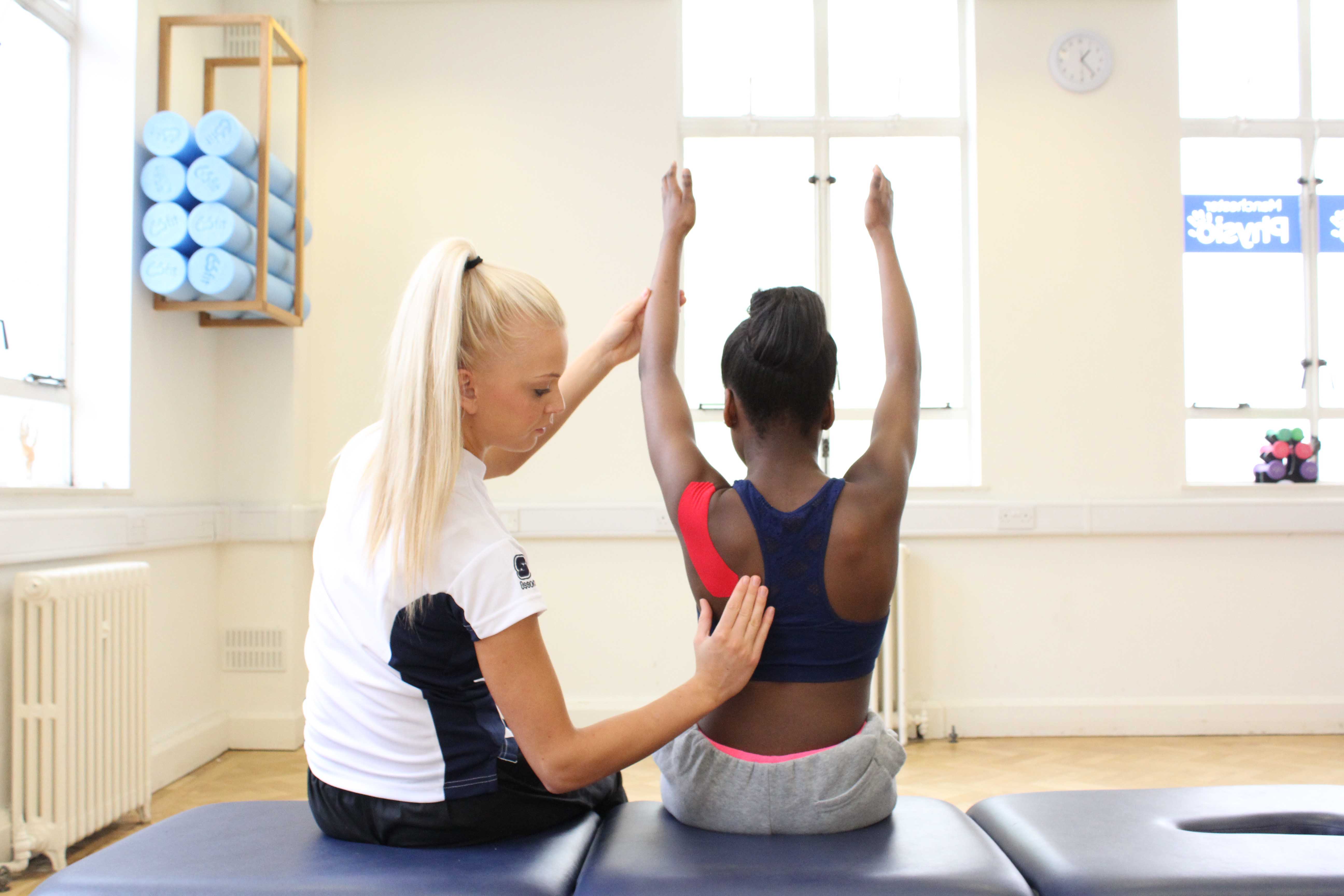What is muscular dystrophy?
Muscular dystrophy (MD) is a genetic disorder that leads to progressive muscle weakness caused by a genetic abnormality that prevents the body from making the proteins needed to build and maintain healthy muscles.
A child who has MD will gradually lose their ability to do functional activities such as walking, sitting upright and moving their arms and hands.
There are several different of muscular dystrophy, which can affect the muscles to varying degrees. The most common types that usually present in childhood are:
- Duchenne muscular dystrophy – this type of MD affects boys and is the most severe and common form of muscular dystrophy. Symptoms are usually apparent by age three.
- Becker muscular dystrophy – this type of MD is milder and less common than duchenne’s. Symptoms may not present until age ten or eleven
 Above: Core stability and strengthening exercises assisted by a paediatric physiotherapist
Above: Core stability and strengthening exercises assisted by a paediatric physiotherapistWhat causes muscular dystrophy?
Muscular dystrophy is caused by mutations in the genes that are responsible for healthy muscle structure and function. This mutation means that the muscle cells can no longer fulfill their role which results in muscle weakness and progressive disability.
The different types of MD are caused by mutations in different genes, which means that symptoms differ between different types of MD.
 Above: Physiotherapist using taping to help stabilise the muscles in the upper back during activity
Above: Physiotherapist using taping to help stabilise the muscles in the upper back during activityWhat are the symptoms of muscular dystrophy?
As there are many types of muscular dystrophies there is a wide variation in symptoms. During the first couple years of life, many children with muscular dystrophy follow a normal pattern of development. However, in time common symptoms begin to appear and your child may start to stumble, waddle, have difficulty going up stairs, and toe walk (walk on the toes without the heels hitting the floor).
Other symptoms of MD may include:
- Progressive muscle weakness and wasting usually in the lower limbs to begin with.
- Muscle cramps and spasm
- Poor balance, frequent falls
- Altered walking pattern
- Behavioural difficulties
- Respiratory problems
Diagnosis of muscular dystrophy
If you suspect your child has MD you should consult your GP. You will then be referred to a neurologist who will do a physical examination, take a family history, and ask about your child's current functional problems to confirm a diagnosis. In addition to this, your neurologist may perform a blood test to determine what type of MD is involved and to rule out other diseases that could cause the problem.
Physiotherapy for muscular dystrophy?
At Physio.co.uk, physiotherapy treatment will maximise your child's physical potential and independence with everyday activities for as long as possible.
Physiotherapy treatment at Physio.co.uk will depend on your child's condition and their current stage of development but may include:
- Exercises to maintain joint range of movement and soft tissue length
- Strengthening exercises to maintain muscle strength for as long as possible
- Gait re-education to decrease compensation when walking
- Advice regarding appropriate mobility aids and equipment to maintain independence
- Anticipating and minimising secondary complications that may occur
- Providing support with respiratory problems to maintain a clear chest
- Teaching and advising family and carers on safe manual handling techniques
Physio.co.uk provide treatment of children or adolescents with muscular dystrophy across Greater Manchester and Cheshire. We can provide assessment and treatment at our clinic, a child’s school or at your home for your convenience.
For more information on physiotherapy for muscular dystrophy or to book an appointment please call 0330 088 7800, or book online today!

 0330 088 7800
0330 088 7800

































